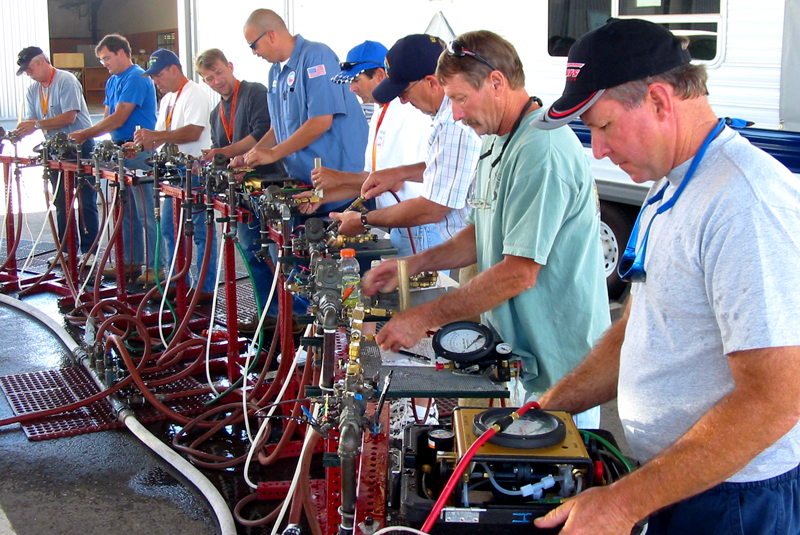Almost everyone has got his or her own opinion in relation to What is Backflow Testing?.

Yes, you need to backflow examination your residence's water system to guarantee that the water is without contaminants and unsafe degrees of chemicals. As a result of the equipment needed and space for error, you must not try to carry out heartburn screening on your own. We advise that you call a specialist plumber every number of years to test your water.
Heartburn Can Influence Both You as well as Your City
Several cities develop backflow guidelines because hazardous backflow can impact the public water in addition to a solitary building. Fortunately, modern-day cities have backflow tools in place that protect the supply of water that originates from many houses and also commercial residential or commercial properties. The genuine risk originates from watering systems, which can harm the water system with toxic fertilizers, manure, and also other chemicals.
What Causes Heartburn?
A typical cause of backflow is a loss of water pressure that triggers the water to siphon back into the water supply. After some time, there is a loss in water stress and the hose pipe begins to suck the water back right into the water supply. As you can picture, there are currently chemicals from the paint that are going into the water supply, possibly posing a risk.
Heartburn Screening is Called For by Regulation in Certain Cities
Depending upon where you live, you may really be needed by regulation to backflow examination your regulation. Iowa City keeps a document of all properties served by the city's water supply. The city needs that particular "high-hazard" centers undertake backflow testing. In some cases, houses such as houses and also apartment are affected.
You Can Stop Backflow
The main purpose of a heartburn tool is to protect against water from moving backwards into your water supply. Plumbers mount the tool on the pipes in your house to make certain that the water just flows in the proper direction.
What is Heartburn?
Basically, backflow is when water moves upwards-- the contrary direction in the plumbing system. This is also known as "backpressure." When the water relocates this instructions, it can mix with dangerous toxins and position a danger.
Call a Plumber to Check for Backflow Prior To It is Too Late
A plumbing company can quickly examine your residence's water to figure out if there are any type of dangerous chemical degrees. As well as if you do find that your water has high levels of contaminants, a plumber can conveniently mount a heartburn avoidance tool.
Yes, you need to backflow test your house's water supply to make sure that the water is complimentary of toxins as well as unsafe degrees of chemicals. Many cities establish heartburn guidelines because dangerous heartburn can impact the public water supply in addition to a solitary building. A normal reason of backflow is a loss of water pressure that triggers the water to siphon back right into the water supply. After some time, there is a loss in water pressure as well as the hose begins to draw the water back right into the water supply. The main purpose of a backflow gadget is to protect against water from flowing backwards right into your water supply.
WHY DOES BACKFLOW TESTING NEED TO BE DONE EVERY YEAR
What Is Backflow?
Toxic gas backing up into a building is one example of potential backflow issues, but backflow can occur in many other ways.
Backflow is generally referred to as the reversal of a liquid or gas in a plumbing system.
Most issues for the public occur with backflow resulting in contaminated drinking water. If you look up backflow issues online you’ll probably find references to “potable” water. That means drinking water.
There have been backflow issues in the past with drinking water. Chemicals, sewage and other contaminants have found their way into drinking water causing health issues for those that count on the fresh water.
What Causes Backflow?
In a residence or commercial building water generally flows one way. This normal flow is usually driven by consistent pressure in the water and waste system.
Anything that changes the normal pressure in the system can lead to backflow.
Fire hydrant use or malfunction can reverse the normal pressure in the system on a city line, but backflow can occur in a number of different ways.
Sometimes backpressure might be caused by someone using a garden hose and submerging the end of the hose in a pool of liquid. If pressure is lost the flow could reverse and contaminants could be released into the drinking water.
Anytime there is a connection between contaminants and the drinking water there is potential for a backflow issue. Sometimes these connections are not immediately obvious like the garden hose connecting to a building’s drinking water supply.
Backflow Regulations
The Environmental Protection Agency (EPA) provides guidelines and regulations for state and local governments regarding backflow. State and local governments also have their own guidelines and regulations for backflow prevention.
Arizona has its own backflow regulations.
Due to issues with backflow in the past, regulations require backflow preventer devices to be used in nearly all residential and commercial buildings.
A backflow preventer is a device that prevents backflow as cross-connection points where potential backflow issues may occur.
While backflow is not a common occurrence, preventers are in place to make sure there is no contamination should something malfunction or go wrong with a building’s water supply.

We are very serious about Backflow Prevention and I am praying you appreciated the entire blog post. Are you aware of anybody else who is fascinated about the niche? Do not hesitate to share it. I praise you for your time. Visit again soon.
Address plumbing needs.